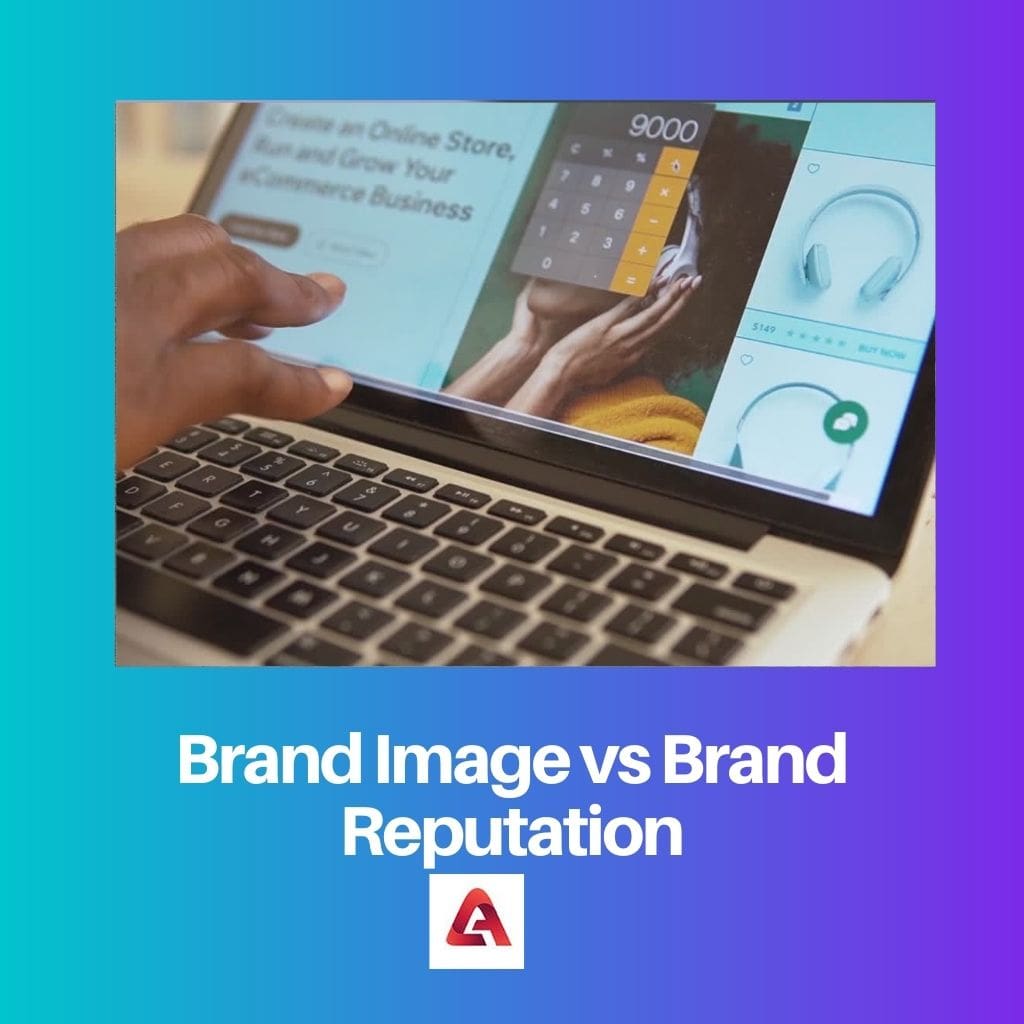Brand image refers to the perception of a brand’s identity and visual representation in the minds of consumers, shaped by marketing efforts and visual elements. Brand reputation, on the other hand, encompasses the overall perception of a brand’s trustworthiness, reliability, and quality based on its actions, interactions, and customer experiences over time, which can significantly influence consumer loyalty and purchasing decisions.
Key Takeaways
- Brand image is how customers perceive a brand based on its visual identity, messaging, and advertising.
- Brand reputation is how customers perceive a brand based on its performance, social responsibility, and customer service.
- Marketing efforts shape brand image, while brand reputation is shaped by customer experience.
Brand Image vs Brand Reputation
Brand image refers to the perception and impression that consumers have of a brand based on its visual and sensory elements such as its logo, packaging, advertising, and other marketing communications. Brand reputation refers to the overall impression and opinion that stakeholders.

Brand Image is a visualization of a company commonly applied by the public.
When a company’s product is launched, certain expectations are visualized by the customers, and they picturise this from their previous experience with the brand and its product.
Brand Reputation is the collective opinion that a company owns due to the quality of the products they produce. The immediate thought which pops up in a customer’s mind when the brand is acknowledged is the reputation that it has earned.
Comparison Table
| Feature | Brand Image | Brand Reputation |
|---|---|---|
| Definition | The perception of a brand in the consumer’s mind, shaped by their direct and indirect experiences with the brand. | The overall public sentiment about a brand, based on its actions, communications, and history over time. |
| Focus | Individual and subjective, influenced by factors like marketing, product experience, and word-of-mouth. | Broader and more objective, encompassing the perspectives of customers, employees, investors, and the media. |
| Formation | Shorter-term and can be easily influenced by recent events or marketing campaigns. | Long-term and built up over a sustained period of consistent actions and behavior. |
| Control | Brands have some control over shaping their image through intentional communication and marketing efforts. | Brands have limited control over their reputation, as it is ultimately shaped by public perception. |
| Impact | Influences purchase decisions and customer loyalty in the short-term. | Can impact financial performance, brand value, and employee recruitment in the long-term. |
| Example | A brand may have a fun and trendy image due to its social media presence, even if its customer service is poor. | A brand may have a positive reputation for ethical practices due to its commitment to sustainability, even if its product designs are not considered innovative. |
What is Brand Image?
Definition and Importance
Brand image refers to the overall perception, impression, and portrayal of a brand in the minds of consumers. It encapsulates the beliefs, feelings, and associations consumers have towards a brand, influencing their attitudes, behaviors, and purchasing decisions. A strong and positive brand image can differentiate a brand from competitors, foster customer loyalty, and enhance brand equity, ultimately contributing to long-term success and profitability.
Components of Brand Image
- Brand Identity: This encompasses the tangible elements of a brand, including its logo, visual assets, packaging, and messaging. These components help to establish the brand’s distinctiveness and recognition, forming the foundation of its image in the eyes of consumers.
- Brand Personality: Brands adopt human-like characteristics to connect with consumers on an emotional level. Brand personality traits such as sincerity, excitement, competence, sophistication, ruggedness, etc., shape how consumers perceive and relate to the brand.
- Brand Associations: These are the mental connections and associations consumers make with a brand based on their experiences, marketing communications, and interactions. Positive associations can include attributes like quality, reliability, innovation, and customer service, while negative associations can detract from the brand’s image and reputation.
- Brand Perception: This refers to how consumers interpret and make sense of the brand’s identity, messaging, and actions. Perception can be influenced by factors such as brand positioning, messaging consistency, cultural context, and personal experiences, shaping the overall image consumers hold of the brand.
Building and Managing Brand Image
Building a strong brand image requires a strategic approach that aligns with the brand’s values, target audience, and competitive landscape. Key tactics for brand image management include:
- Consistent Brand Messaging: Ensuring that all communication channels and touchpoints convey a cohesive brand message and identity.
- Delivering Consistent Experiences: Providing consistent and positive customer experiences across all interactions and touchpoints.
- Monitoring and Responding to Feedback: Actively listening to customer feedback and addressing any issues or concerns to maintain a positive brand reputation.
- Evolving with Consumer Preferences: Staying attuned to changing consumer preferences, market trends, and competitive dynamics to adapt and evolve the brand image accordingly.

What is Brand Reputation?
Definition and Significance
Brand reputation refers to the overall assessment and impression of a brand’s character, integrity, and performance based on its past actions, behaviors, and interactions. It goes beyond the tangible aspects of a brand’s identity and encompasses the qualitative aspects of its relationships and experiences with stakeholders. A positive brand reputation can enhance customer loyalty, attract top talent, foster investor confidence, and differentiate the brand from competitors, while a negative reputation can erode trust, damage relationships, and hinder growth and profitability.
Components of Brand Reputation
- Trustworthiness: Trust is the cornerstone of a strong brand reputation. Brands that consistently deliver on their promises, uphold ethical standards, and prioritize transparency and accountability tend to earn the trust and confidence of consumers and stakeholders.
- Reliability: Reliability refers to the brand’s consistency and dependability in delivering quality products, services, and experiences. Brands that consistently meet or exceed customer expectations and maintain high standards of performance build a reputation for reliability and excellence.
- Credibility: Credibility is earned through the brand’s expertise, authority, and track record of success in its industry or market. Brands that demonstrate expertise, thought leadership, and innovation build credibility and establish themselves as trusted leaders in their field.
- Responsiveness: Responsiveness refers to the brand’s ability to listen, engage, and adapt to the needs, feedback, and concerns of its stakeholders. Brands that are responsive to customer inquiries, complaints, and feedback demonstrate a commitment to customer satisfaction and relationship-building, enhancing their reputation in the process.
Building and Managing Brand Reputation
Building and managing a positive brand reputation requires a proactive and strategic approach that prioritizes integrity, transparency, and stakeholder engagement. Key strategies for brand reputation management include:
- Upholding Ethical Standards: Operating with integrity, honesty, and ethical conduct in all business practices and interactions.
- Delivering Consistent Quality: Maintaining high standards of quality, reliability, and performance in products, services, and customer experiences.
- Engaging Stakeholders: Actively listening to and engaging with customers, employees, investors, and partners to understand their needs, preferences, and feedback.
- Monitoring and Responding to Feedback: Monitoring online and offline channels for mentions, reviews, and feedback about the brand and responding promptly and appropriately to address any issues or concerns.
- Investing in Corporate Social Responsibility (CSR): Demonstrating a commitment to social and environmental responsibility through CSR initiatives and community involvement.

Main Differences Between Brand Image and Brand Reputation
- Brand Image:
- Focuses on the perception and portrayal of a brand’s identity and visual representation.
- Shaped by marketing efforts, visual elements, and brand messaging.
- Primarily influenced by external factors such as advertising, design, and brand communication.
- Brand Reputation:
- Encompasses the overall assessment of a brand’s trustworthiness, reliability, and credibility.
- Formed by the brand’s actions, behaviors, and interactions with stakeholders over time.
- Influenced by both external factors (such as customer experiences, reviews, and media coverage) and internal factors (such as corporate culture and ethics).
- Key Difference:
- Brand image focuses on the external presentation and perception of the brand, whereas brand reputation delves deeper into the actual experiences and interactions with the brand.
- Brand image can be influenced by marketing efforts and visual elements, while brand reputation is influenced by the brand’s behavior, actions, and relationships with stakeholders.
- Brand image is more about how the brand wants to be perceived, while brand reputation is about how the brand is actually perceived based on its conduct and performance.





